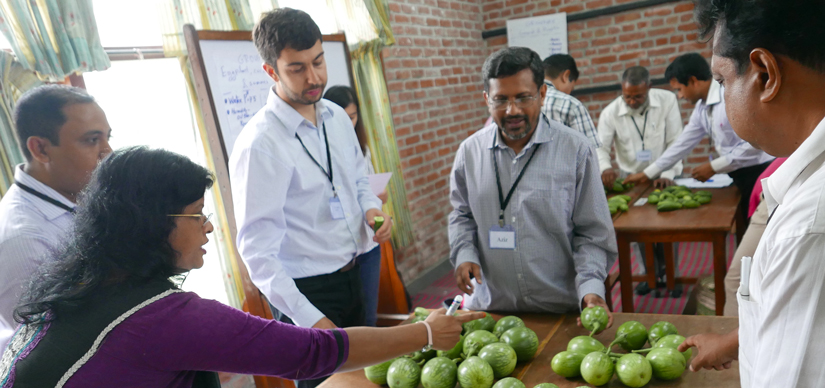
A team from the Horticulture Innovation Lab recently led eight days of training in Bangladesh about improving postharvest practices for fruits, vegetables, grains and flowers. The residential training was part of the Feed the Future Bangladesh Agricultural Value Chain project led by Development Alternatives Incorporated (DAI) with funding from USAID/Bangladesh. The workshop’s audience was about 30 trainers, consultants, and other industry leaders in agriculture and food companies who wanted to learn how to reduce food losses and improve food quality across the value chain.
International team customizes training for local crops
The training focused on many of the most common horticultural crops in Bangladesh: eggplant (brinjal), tomato, pepper, cucumber, pumpkin, bitter gourd, pointed gourd, bottle gourd, potato, and mango. Additional sections of the training focused on grains, pulses and fresh-cut flowers.
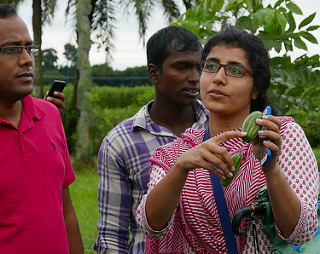
Nearly every day began with members of the team going to local vegetable markets to buy sample produce for class activities. Without refrigeration in the hotel, fresh produce went bad quickly. On the second day of training, the whole class visited a farmer’s field to discuss best practices for harvest and to pick their own unblemished samples of eggplant, amaranth leaves and pointed gourd for the day’s demonstrations.
UC Davis postharvest specialists built an international team of experts for this training, including: Jingtair Siriphanich, Kietsuda Luengwilai, and Apita Bunsiri from Kasetsart University in Thailand; Md. Atiqur Rahmn from the Bangladesh Agricultural Research Institute (BARI); and Md. Younus Ali from the Bangladesh Jute Research Institute (BJRI). Michael Reid, Angelos Deltsidis, and Britta Hansen led the team from UC Davis, and were joined by Bangladeshi colleagues Amrita Mukherjee and Rezaul Islam.
The UC Davis team also brought an assortment of produce fact sheets, informational materials, and other supplies from the UC Davis Postharvest Technology Center. Each participant started the class with their own new kit of equipment — tools that they would learn how to use to improve the quality of crops after harvest.
Hands-on activities demonstrate postharvest lessons
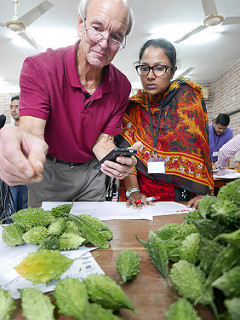
Over the course of eight days, the class learned about various stages of the horticultural value chain, with best practices for harvest, packaging, grading, transportation, cooling, ripening, and drying. In addition to lectures and PowerPoint presentations, each of these topics also had interactive group activities so that trainees could witness the importance and impact of the lessons.
Grading: Class participants learned about sensory qualities that can be measured in fruits and vegetables, such as shape, size, color, gloss, texture and defects. These qualities can be grouped together to provide grades for produce, potentially affecting prices. Each group was given a pile of one type of produce to create their own categories for grading using these quality characteristics and their understanding of consumer preferences, later sorting their pile of produce according to their new grading system.
Water loss: The class discussed harvesting practices and reducing damage, before beginning a multi-day activity focused on water loss. Examples of guava, bitter gourd, tomato, pointed gourd, eggplant and cucumber were weighed and then set aside for a couple of days before being weighed again. The reduction in weight over time showed how much water was lost from that particular fruit, and examples were included of different sizes and with different types of damage to show the impact of defects over time.
Packaging: The groups also learned about different types of packaging for produce, with ways to evaluate the best designs to protect different types of fresh produce from damage. The groups then each designed their own packaging to meet specific parameters, using eggs as an example product. The new packaging was then filled with eggs and knocked from a table to test the effectiveness of their new designs.
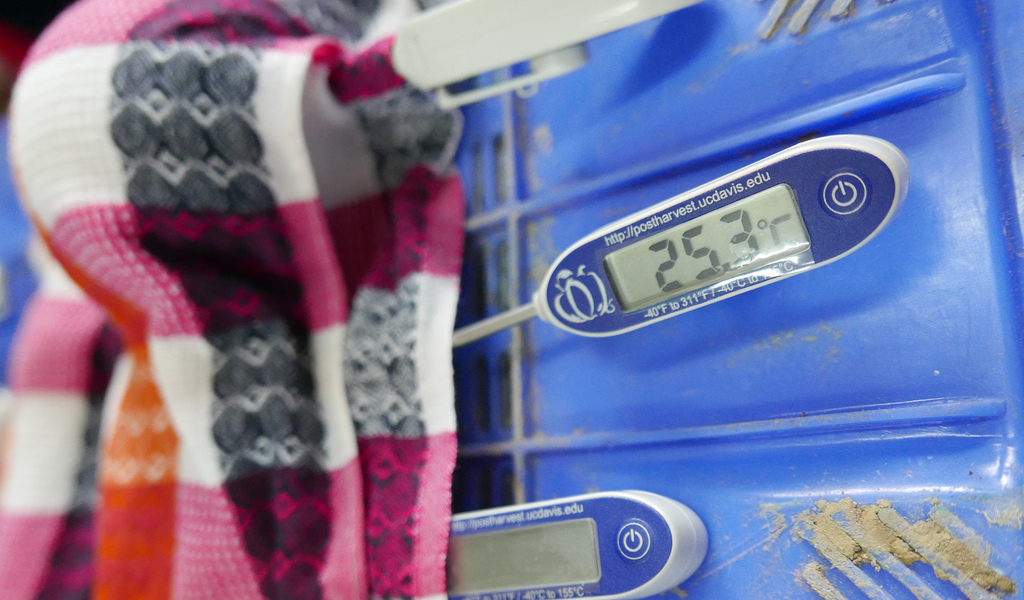
Cooling: As usual, Michael Reid taught the class that “the three most important aspects of postharvest handling are: temperature, temperature, temperature.” Participants learned about various types of cooling and had a chance to visit the Regional Agricultural Research Station in Jessore to see a cold room for potato storage that uses a CoolBot for affordable cooling. The groups also tested one vegetable across several different types of cooling options—a cold room, an ice bath, evaporative cooling, and combined methods—recording and mapping the specimens’ temperature shifts over the course of 90 minutes.
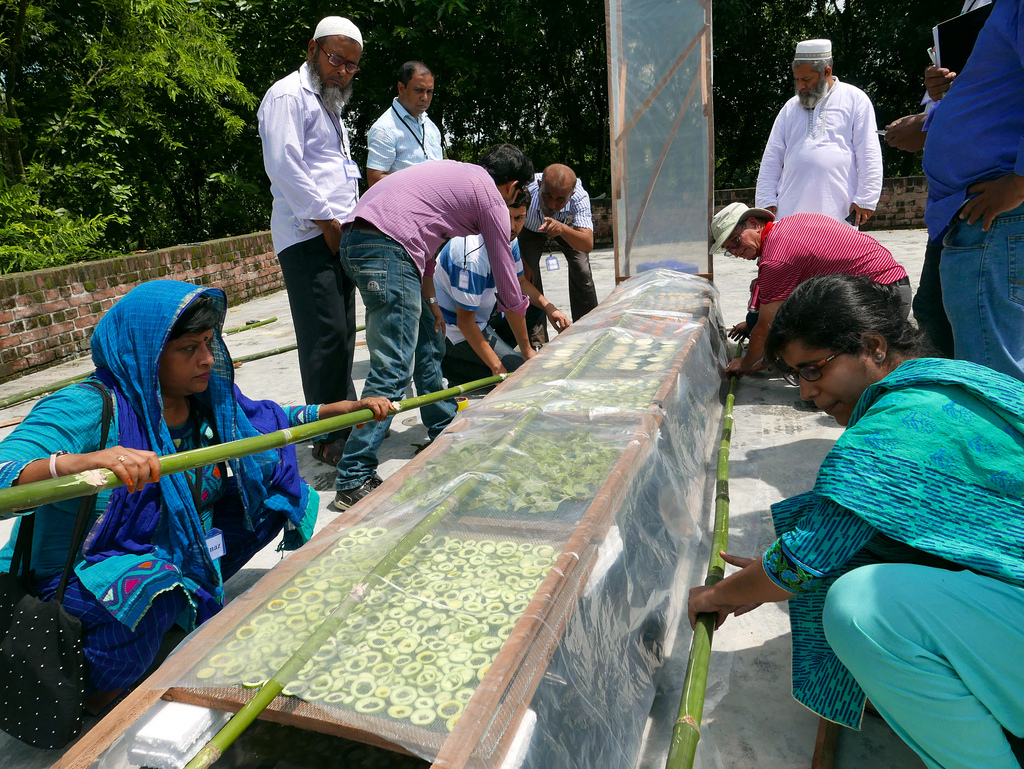
Drying: The group also discussed drying and dry storage as one way to preserve crops, potentially adding value to them too. The group pieced together a solar dryer using local materials and the UC Davis chimney dryer design. They sliced up vegetables and arranged them to dry in the solar dryer.
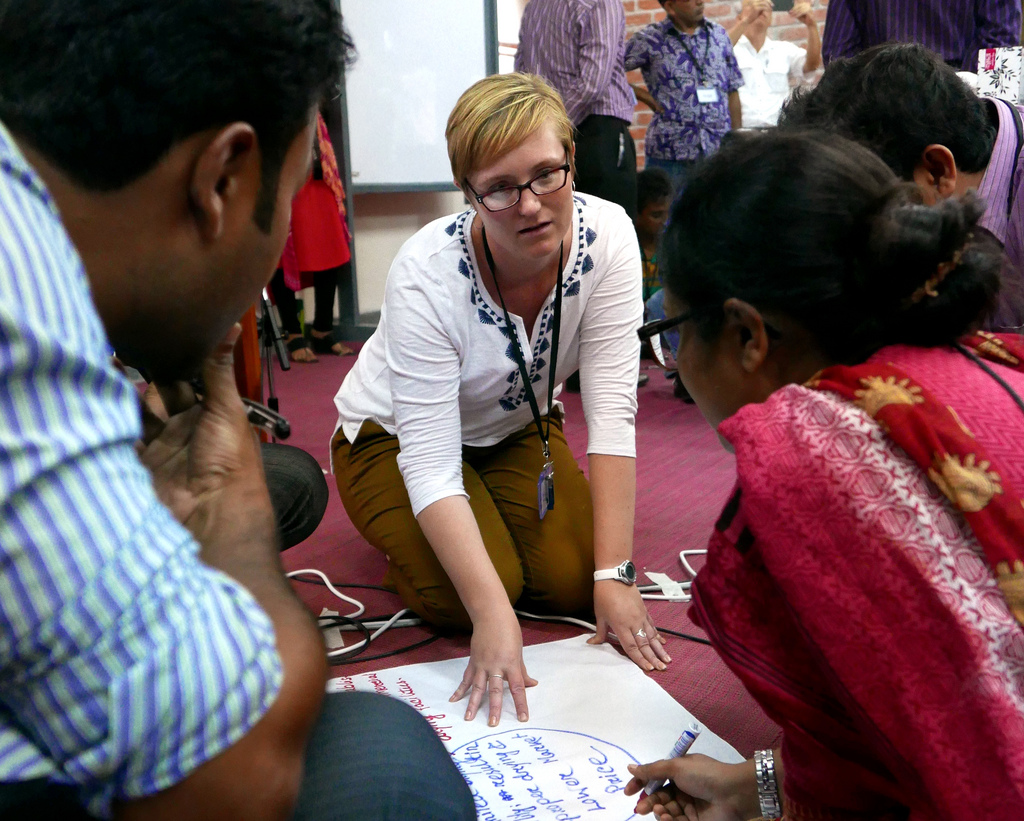
Extension and action plans: The class also learned about needs-based agricultural extension. In groups, the participants identified a specific problem related to postharvest to solve, and then worked through the various stages of the value chain to develop action plans. The action plans identified tools and information that would be needed to solve the problem, how the tools or information would be shared with people who needed it to solve the problem, and ways to scale their solutions.
Related:
- More photos of this postharvest training, from the Horticulture Innovation Lab
- Agrilife article in Bengali, Aug. 8
- Agrilife article in Bengali, July 30
- BD Krishi News, Aug. 1
- Photos of the workshop from USAID AVC project
All photos in this post: Horticulture Innovation Lab photos by Britta Hansen.
